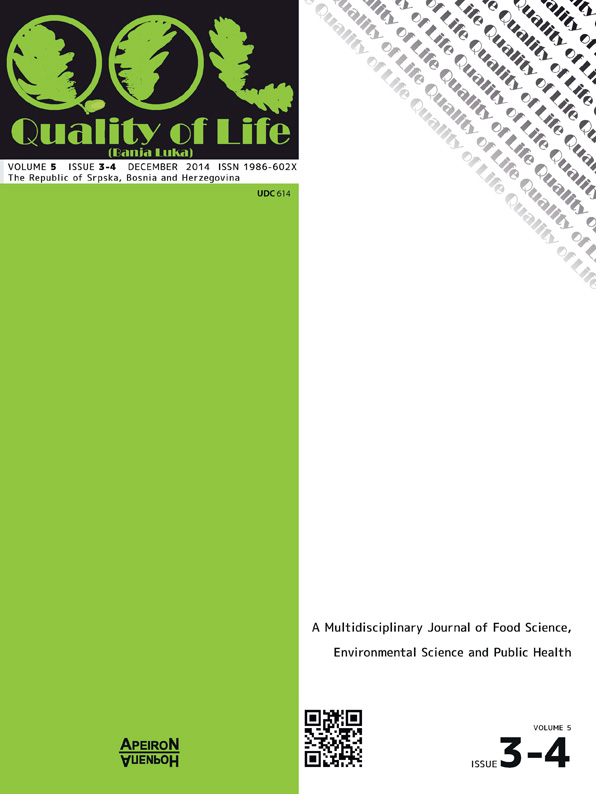Cook Loss as a Function of Meat Heat Treatment and Regime
DOI:
https://doi.org/10.7251/QOL1402081VAbstract
Heat treatment of meat causes different changes in the structure of meat, for example, decimation of cell films, tearing of muscle strands, tearing and disintegration of the connective tissue proteins, coagulation and gel development of the myofibrillar and sarcoplasmic proteins.
The aim of the study presented in this paper was to investigate the effect of heat treatment by roasting and cooking at atmospheric pressure on cook loss of M. Longissimus dorsi of pork in the temperature range between 50°C and 100°C. Consequently were analyzed and the drip losses seen as a result of freezing and thawing of meat before heat treatment.
The observed parameters amid tests indicated steady measurably critical change (P<0.001) of observed qualities with temperature expanding amid the both hotness treatment forms in the given temperature range. The most ideal temperature in the core of the pork meat sample during heat treatment is in the temperature range somewhere around 70°C and 80°C. Heat treatment by cooking gave samples with less cook loss yield, compared to the heat treatment by roasting.
